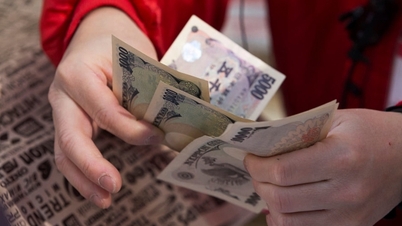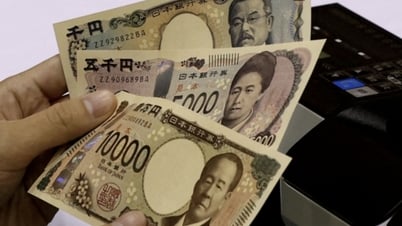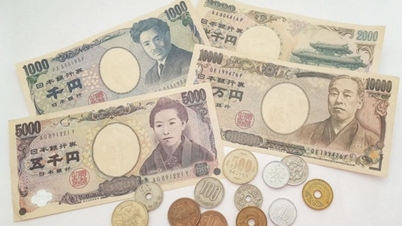Reduced by almost half
According to the Department of Tourism , in June, Vietnam welcomed 37,000 Japanese visitors, down 16% compared to May. In the first 6 months of the year, there were 241,000 Japanese visitors to Vietnam, down nearly 50% compared to the 456,000 visitors in the same period in 2019 - before the pandemic.

Japanese tourists visit Thanh Ha lychee garden, Hai Duong
Japan has always been one of the important tourist markets of Vietnam, in the group of 3 markets contributing the largest number of visitors, along with China and South Korea. However, in the first 6 months of this year, the list of leading tourist markets of Vietnam according to statistics included South Korea, China, the US, Taiwan, and Thailand. The Japanese market has quietly left the top 5.
The markets in the top 5 with impressive growth, exceeding pre-pandemic levels (first 6 months of 2019) include Cambodia with an increase of 338%, India (236%), Laos (117%), Thailand (108%) and Singapore (over 107%). The markets that recovered to close to 2019 levels include the US (95%) and Australia (92%), South Korea (77%), UK (79%), Germany (84%)... China alone is only about 22% of pre-pandemic levels because this tourist market only opened last March.
Overall, the trend of Japanese tourists going abroad has decreased across all destinations, not just Vietnam. Japanese government data shows that the number of Japanese people leaving the country for tourism in March was 694,300, only 36.0% compared to the same period in 2019 - before the pandemic. In contrast, the number of foreign visitors to Japan has recovered to 65.8% of the 2019 level.
Weak yen, inflation, economic difficulties
According to the Japanese newspaper Nikkei Asia , the number of Japanese tourists traveling abroad doubled this summer, to 1.2 million trips compared to the previous year (when Japan was still applying restrictions due to the pandemic), but in reality, it was only 40% compared to 2019 due to the weak yen, tourists had to pay more.
This coincides with a survey conducted by Japanese travel giant JTB, which found that there are many reasons why so few Japanese people are planning to travel abroad in 2023, but the weak yen is the biggest reason keeping them at home (22%).

Japanese tourists wearing Ao Dai visit Ben Thanh market
The Japanese yen has been rapidly weakening against the US dollar in the foreign exchange market since last year. In October 2022, the yen fell to 150.15 yen per dollar, the weakest level for the Japanese currency in 24 years, since August 1998.
By June 2023, the exchange rate will be around 140 yen to the dollar. That means Japanese people traveling abroad will need to exchange more yen for a dollar. Inflation is also causing Japanese families to tighten their spending, and overseas travel is one of the first items to be cut.
According to Nikkei Asia , Japanese tourists traveling domestically face costs that are 10% higher than before the pandemic. Japanese tourists are limiting their overseas travel and staying more in their own country, pushing up service costs. JTB forecasts that during the peak summer of 2023, about 72.5 million summer trips will be made by Japanese people, up 17% from the same period in 2022 and slightly up from 2019.
A survey conducted by consulting firm Morning Consult found that more than 35% of Japanese people do not intend to travel in 2023. This figure far exceeds the answers of respondents in 15 other countries in the survey.
Japan urges citizens to travel abroad
Japan has just called on its citizens to take trips to 24 foreign destinations, including Vietnam, to promote the aviation and tourism industries to recover after Covid-19.
While the number of visitors to Japan has been steadily increasing since border restrictions were eased last year, concerns about the pandemic and a weak yen have discouraged Japanese citizens from traveling abroad, according to Kyodo News .
Source link




![[Photo] Party and State leaders visit President Ho Chi Minh's Mausoleum](https://vphoto.vietnam.vn/thumb/1200x675/vietnam/resource/IMAGE/2025/5/19/d7e02f242af84752902b22a7208674ac)

![[Photo] Special flag-raising ceremony to celebrate the 135th birthday of President Ho Chi Minh](https://vphoto.vietnam.vn/thumb/1200x675/vietnam/resource/IMAGE/2025/5/19/1c5ec80249cc4ef3a5226e366e7e58f1)





















































































![[VIDEO] - Enhancing the value of Quang Nam OCOP products through trade connections](https://vphoto.vietnam.vn/thumb/402x226/vietnam/resource/IMAGE/2025/5/17/5be5b5fff1f14914986fad159097a677)








Comment (0)